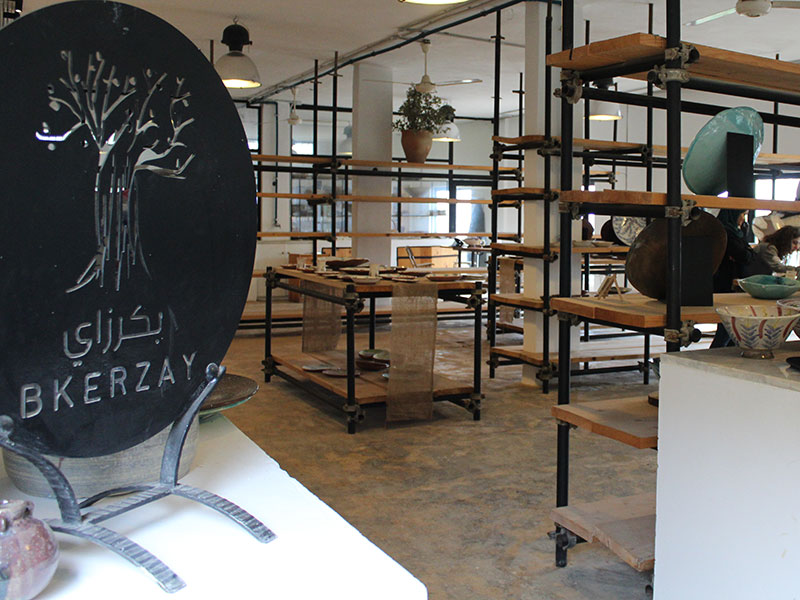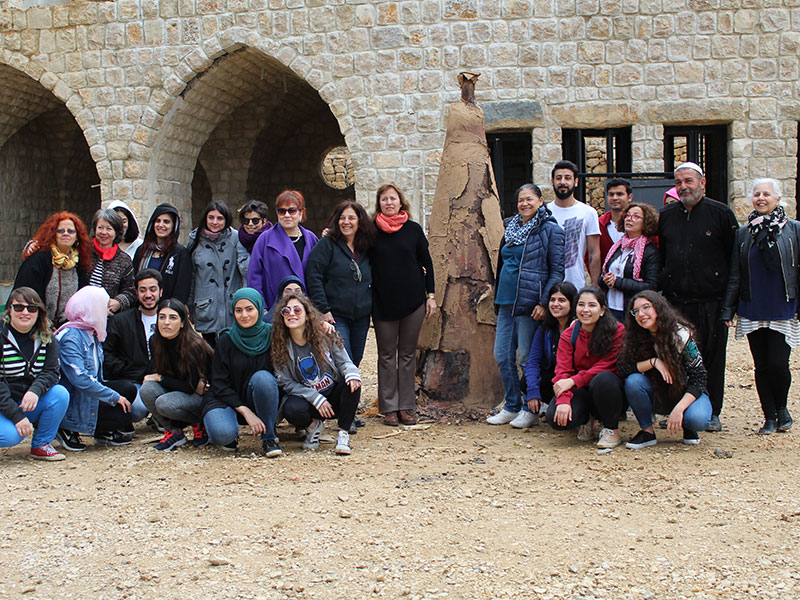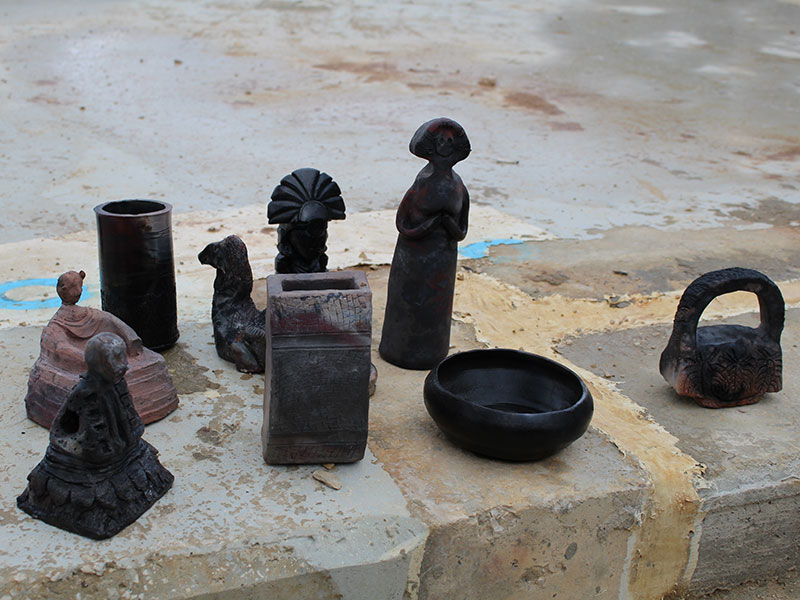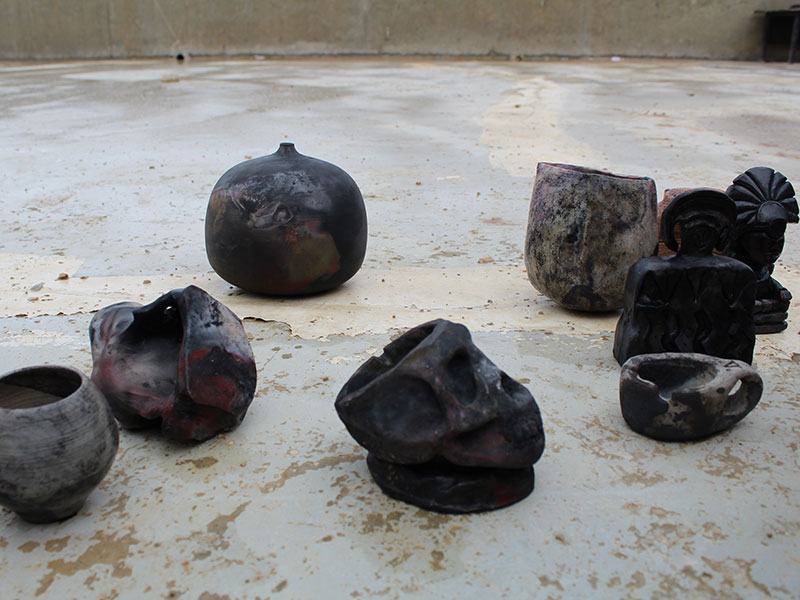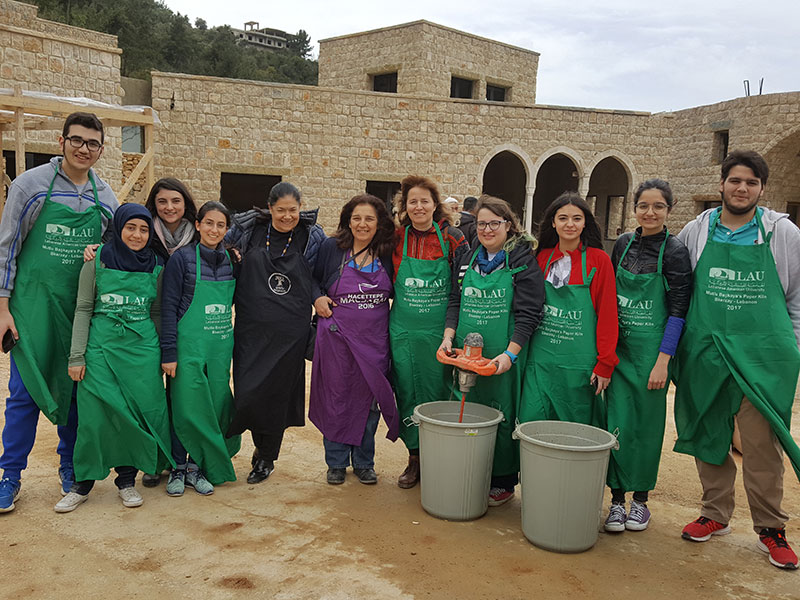LAU Sponsors Ceramics and Paper Kiln Workshop in Bkerzay
For the first time in Lebanon, ceramics maestro and lecturer at Hacettepe University Multu Baskaya gave a lecture in LAU Beirut Campus on March 29th followed by a four-day instructional and enriching workshop on how to build a paper kiln to fire ceramics in. Students, professors and art enthusiasts from around Lebanon participated in this memorable experience.
Samar Mogharbel, ceramics virtuoso and adjunct faculty at LAU, crossed paths with Baskaya in Argentina where they showcased their works. Mogharbel’s invitation for Baskaya to hold the following workshop in Lebanon became concrete with the support and efforts of Dr. Yasmine Taan, Associate professor and Chair of the Department of Architecture and Design.
“Dr. Taan was the drive behind the success of this workshop — a first for the region”, Mogharbel explains.
During the lecture, Mutlu Baskaya shared the origin of her paper kiln approach. The creation of her technique goes back to 1994, but years of development and exploration led to maintaining her innovation behind paper clay and fire division — the standing paper kiln. Contrary to other kiln models in Europe, what makes Baskaya’s model authentic is its structural property to remain upright even after firing.
“This paper kiln workshop motivates Lebanese and artists to go beyond mainstream firing techniques”, Mutlu explains.
Baskaya shares that each of the 18 countries she has visited to showcase her paper kiln method affected her in different ways. The natural conditions, the abundance or lack of resources and minerals, or studio conditions may influence the process for authentic results.
The building of the kiln during the four-day workshop held in Bkerzay was an interactive experience for students, professors and art enthusiasts. “Creating [the kiln] from scratch left the participants in awe of how clay and ceramics function”, Mogharbel adds.
The first day of the workshop involved the preparation of the kiln’s foundation mixture: powder clay, toilet paper and water. Students also began the excavation of the pit, which will later become the fire vault under which the kiln lies. On the second of the workshop, students finalized the clay mixture and assembled them on newspapers to form slabs, or small pieces of clay that will be wrapped around the kiln. Over and above that, participants created the kiln’s cone-like structure from mesh wire. Then, they assembled the fire vault’s grill to complete the foundation of the kiln. Students then placed their capsuled artworks in the pit under the cone-like kiln, which they filled with leaves and wooden logs. Only then did they begin to wrap the cone kiln with layers of paper clay and slabs.
One of the remarkable aspects of this workshop was the artistic manipulation of chemicals (copper sulfate, copper carbonate, sodium…) that were added to the ceramics for more creative results. This process cannot be done in a closed space due to toxic hazards. For that reason, Bkerzay’s location and setting was the perfect location for the workshop.
Having the official structure of the paper kiln in position left to dry overnight, the third day of the workshop included the last step before the firing: adding 25 coatings of newspapers dipped in a thick liquid mixture of clay and water. The firing process of the kiln took all afternoon as well as through the evening due to the continuous labor force of adding wood to the pit and removing ashes. Students acquired intuitive techniques in response to possible cracks in the kiln, natural obstacles of weather and maintenance of fire.
Sunday April 2nd was the final day of the workshop, in which the long-awaited grand opening of the paper kiln took place. Putting off the fire included feeding the kiln carefully with large amounts of water in order to cool it down. The ceramic artworks were then dug out and the final results were outstanding — colorful and unconventional pieces of artwork.
Nour Ali, ceramics instructor and one of the pillars behind the workshop, explained that such an experience is “a once in a lifetime opportunity for students to witness firsthand.”
Mogharbel added: “this step is not only one step further for the ceramics studio but also a promising stride for the ceramist community in Lebanon.”
This whole initiative would not have been possible without the support of LAU and the initiative of Mr. Ramzi Salman, the person behind the creation of the artistic colony of Bkerzay.
